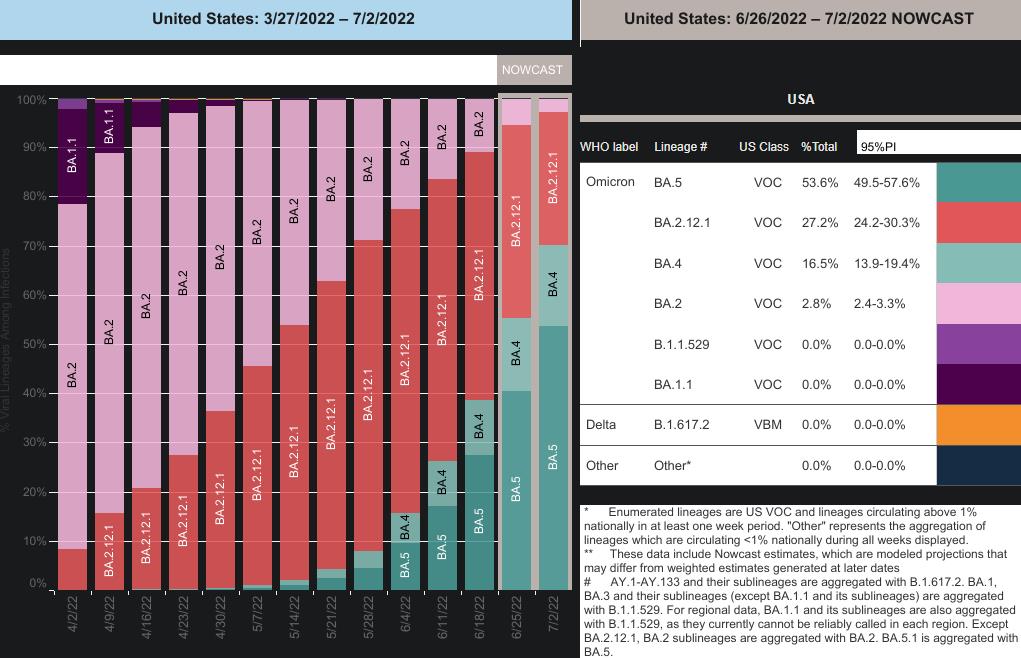
The Omicron BA.5 subvariant of COVID-19 is dominant in the U.S., according to latest official data released on July 6, 2022. /CFP
The Omicron BA.5 subvariant of COVID-19 is dominant in the U.S., according to latest official data released on July 6, 2022. /CFP
The Omicron BA.5 has become the dominant COVID-19 subvariant in the U.S., edging out previous iterations like the BA.2.12.1, BA.2, and BA.1.1.
According to estimations from the U.S. Centers for Disease Control and Prevention (CDC) released on Tuesday, the percentage of BA.5 in the U.S. has reached about 53.6 as of July 2, while the Delta variant, Omicron BA.1.1, B.1.1.529 have disappeared from the country.
The percentage for BA.2.12.1 has gone down from a peak of 63.1 in May to the current 27.2.
It took about five weeks for the BA.5 percentage to grow from single digits to more than half of the total, which was faster than the six-week timespan for the BA.2.12.1.
The speed might be even faster considering there were more new cases in June compared with in May or April.

The COVID-19 variant proportions tracker, as of July 6, 2022. /U.S. CDC
The COVID-19 variant proportions tracker, as of July 6, 2022. /U.S. CDC
Doctors in San Francisco told local media that the speed can be explained by how BA.5 invades the body.
A doctor said BA.5 is quite different from other COVID-19 variants for our immune system to identify, and as a result, people who have already had Omicron before are still susceptible to BA.5.
It's the "escape artist" or the "Houdini" of COVID, the doctor said.
BA.5, together with BA.4, is estimated to make up a combined 70.1 percent of the coronavirus variants in the U.S. They were added to the World Health Organization's monitoring list in March.
According to data from the U.S. CDC, 33 percent of Americans should be wearing masks while indoors and an additional 36 percent should be considering the measure based on their risk for severe COVID-19.
(With input from agencies)

